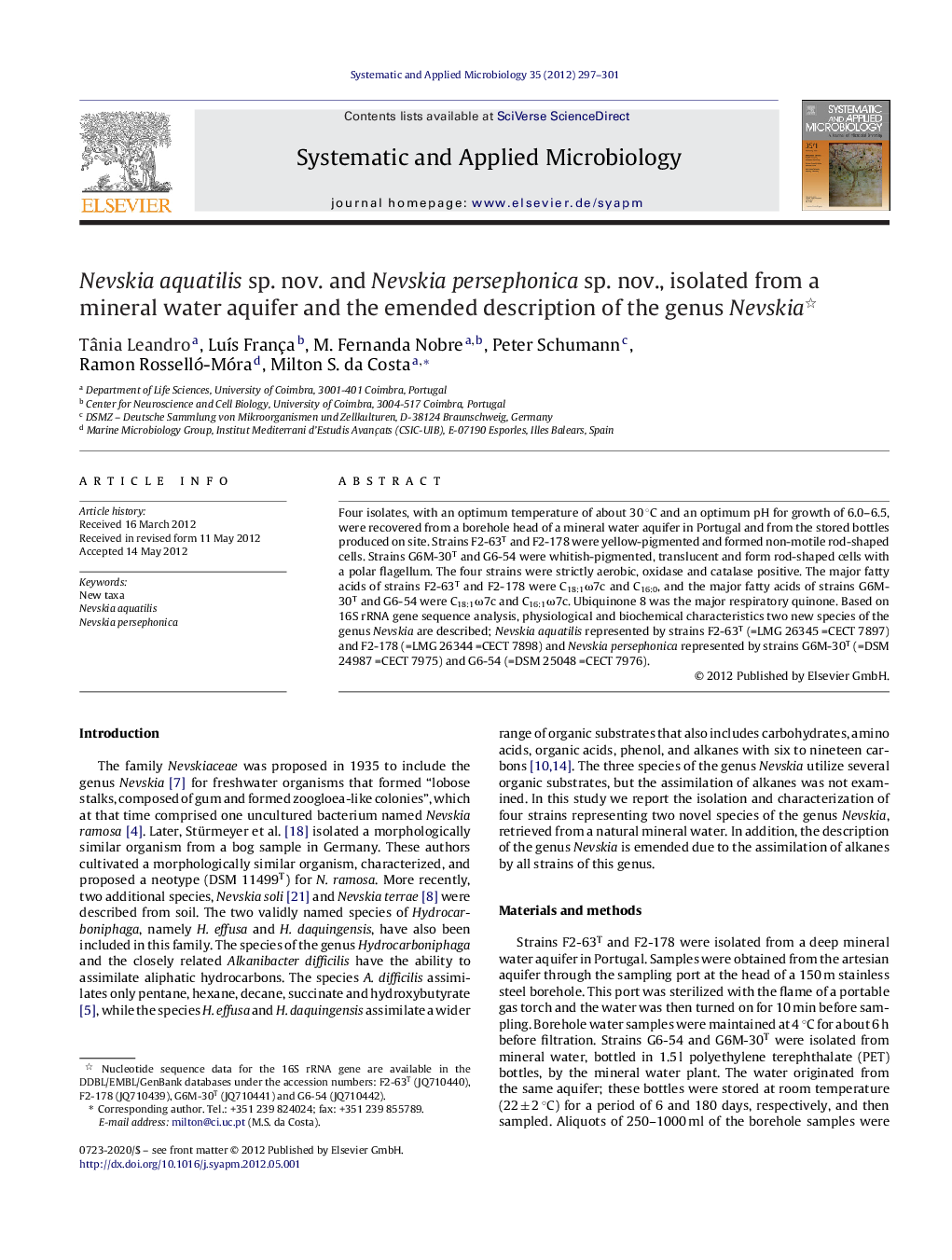| Article ID | Journal | Published Year | Pages | File Type |
|---|---|---|---|---|
| 2063836 | Systematic and Applied Microbiology | 2012 | 5 Pages |
Four isolates, with an optimum temperature of about 30 °C and an optimum pH for growth of 6.0–6.5, were recovered from a borehole head of a mineral water aquifer in Portugal and from the stored bottles produced on site. Strains F2-63T and F2-178 were yellow-pigmented and formed non-motile rod-shaped cells. Strains G6M-30T and G6-54 were whitish-pigmented, translucent and form rod-shaped cells with a polar flagellum. The four strains were strictly aerobic, oxidase and catalase positive. The major fatty acids of strains F2-63T and F2-178 were C18:1ω7c and C16:0, and the major fatty acids of strains G6M-30T and G6-54 were C18:1ω7c and C16:1ω7c. Ubiquinone 8 was the major respiratory quinone. Based on 16S rRNA gene sequence analysis, physiological and biochemical characteristics two new species of the genus Nevskia are described; Nevskia aquatilis represented by strains F2-63T (=LMG 26345 =CECT 7897) and F2-178 (=LMG 26344 =CECT 7898) and Nevskia persephonica represented by strains G6M-30T (=DSM 24987 =CECT 7975) and G6-54 (=DSM 25048 =CECT 7976).
